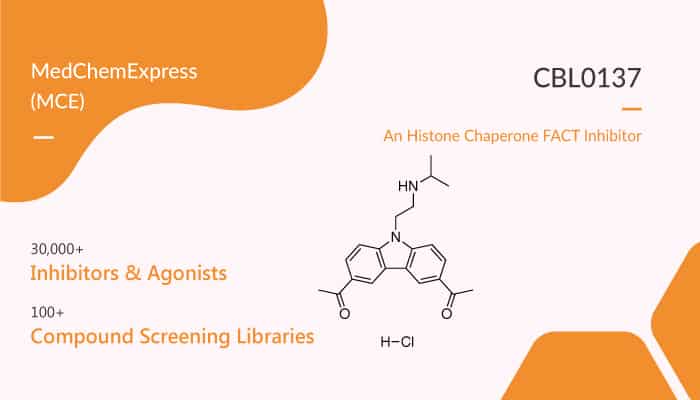Cancer harbors several characteristics, including high heterogeneity, diverse gene mutation, or rapid progression; consequently, treating cancer is difficult, and it easily relapses. Surgery, radiotherapy, chemotherapy, immunotherapy, and targeted therapy show remarkable achievements. In particular, targeted therapies promote treatment. However, we have failed to treat cancer. Chemotherapy with or without radiation remains the first choice for most cancers. However, intolerant side effects and conventional drug resistance restrict actual clinical efficacy. Malignancies, such as glioblastoma, are quite invasive and cannot be entirely removed by surgery. In this study, CBL0137 is a second-generation curaxin, and it acts by facilitates chromatin transcription (FACT) complex. CBL0137 also regulates p53 and nuclear factor-κB simultaneously and prevents the resistance caused by a single target. It can also activate p53 and inhibits NF-κB with EC50s of 0.37 and 0.47 µM, respectively.

CBL0137 is a anticancer compounds that simultaneously suppress NF-κB and activate p53 by targeting FACT.
CBL0137 exerts antitumor activity through multiple targets, including FACT, NOTCH1, and heat shock factor 1 (HSF1), in various cancers. It is water-soluble. In addition to the two targets, namely, p53 and NF-κB, CBL0137 can intercalate DNA through FACT. It does not cause any DNA damage or genotoxicity. Moreover, CBL0137 prolongs the survival of orthotopic A1207 and U87MG models, though it is less effective than temozolomide in the latter. CBL0137 also accumulates in brain tissues in orthotopic mouse models, suggesting that it can penetrate the blood-brain barrier. It can activate NOTCH1 and inhibit the self-renewal of CSCs/TICs, thereby facilitating the enhanced prevention of therapeutic resistance and tumor progression.
In summary, CBL0137 has broad antitumor activity in a wide range of cancers. CBL0137 is a candidate for monotherapy and applied to enhance the effectiveness of chemotherapy and targeted therapy, giving it more potential and clinical significance.
Reference:
Jin MZ, et al. Front Oncol. 2018;8:598. Published 2018 Dec 7.; Gasparian AV, et al. Sci Transl Med. 2011 Aug 10;3(95):95ra74.